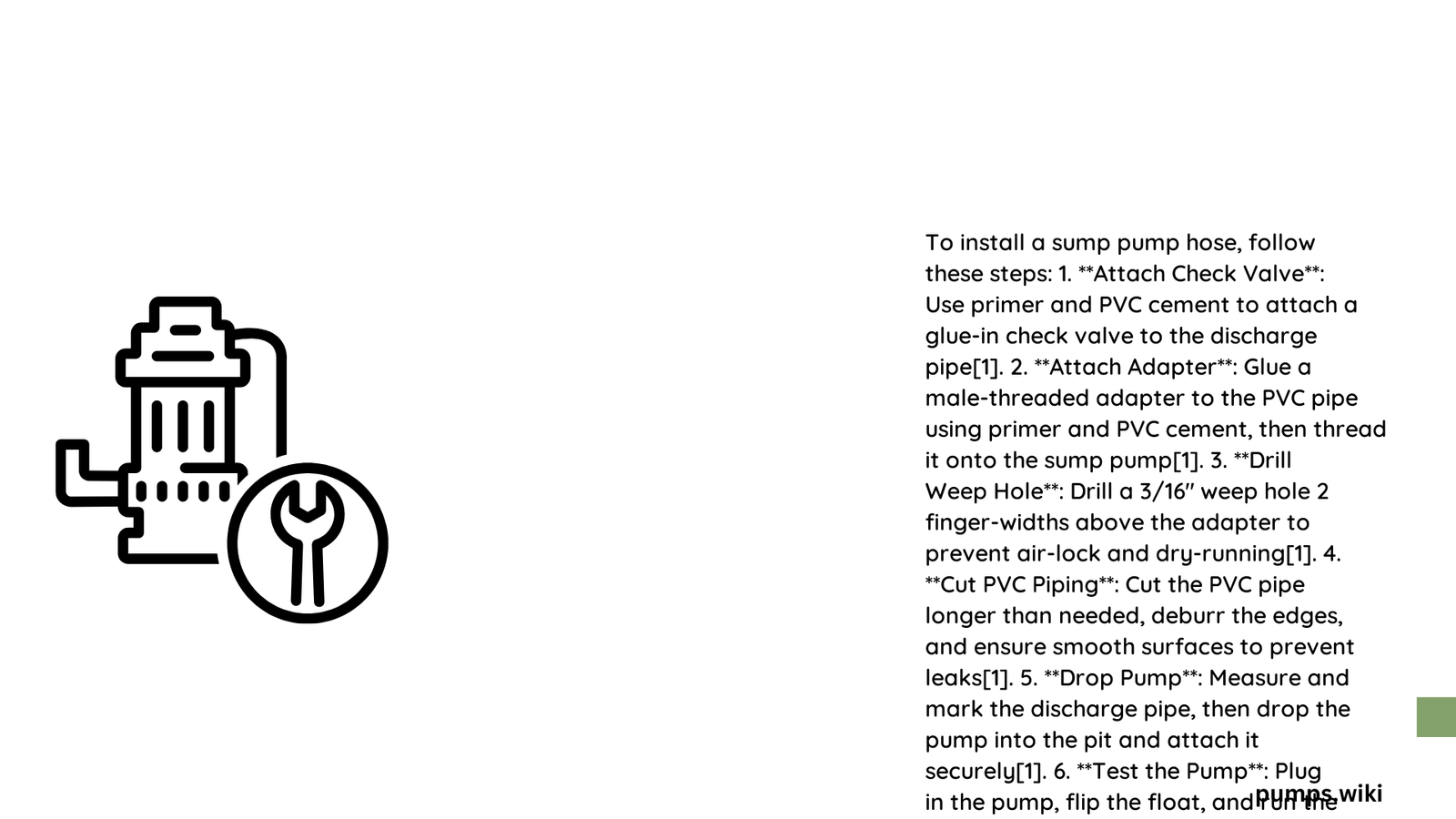Sump pump hose installation is a critical home maintenance task that prevents water damage and protects your property’s foundation. A properly installed discharge line ensures efficient water removal, prevents basement flooding, and maintains the longevity of your sump pump system. This comprehensive guide will walk you through every aspect of sump pump hose installation, from selecting materials to executing a professional-grade setup.
Why Is Proper Sump Pump Hose Installation Critical?
Improper sump pump hose installation can lead to significant problems:
– Water recirculation near foundation
– Potential basement flooding
– Premature pump motor failure
– Increased risk of water damage
What Materials Do You Need for Sump Pump Hose Installation?
| Material | Purpose | Recommended Type |
|---|---|---|
| PVC Pipes | Primary discharge line | 2-inch diameter, schedule 40 |
| PVC Cement | Secure pipe connections | Professional-grade waterproof cement |
| Pop-up Drain | Water dispersal | Underground bubbler style |
| 90-Degree Elbow | Directional routing | PVC fitting |
| Wire Ties | Cord management | UV-resistant nylon |
How to Plan Your Sump Pump Discharge Route?

Route Considerations
- Minimum 10 feet from foundation
- Avoid neighboring properties
- Comply with local drainage regulations
- Ensure consistent downward slope
Step-by-Step Sump Pump Hose Installation Process
- Site Preparation
- Locate optimal discharge path
- Check local frost line depth
- Mark underground utility lines
-
Obtain necessary permits
-
Trench Excavation
- Dig trench below frost line
- Maintain consistent 2-3 degree downward slope
- Remove rocks and debris
-
Ensure smooth, even surface
-
Pipe Connection Techniques
- Clean pipe ends thoroughly
- Apply PVC primer
- Use generous cement application
- Allow 24-hour curing time
- Test connections for leaks
What Are Common Installation Mistakes to Avoid?
Potential Pitfalls
- Insufficient pipe slope
- Inadequate pipe diameter
- Improper connections
- Lack of freeze protection
- Incorrect discharge location
How to Prevent Freezing and Blockages?
Freeze Prevention Strategies
- Bury pipes below frost line
- Use insulation sleeves
- Install check valves
- Consider heat tape for extreme climates
Maintenance Tips for Long-Term Performance
Regular Inspection Checklist
- Check for pipe damage
- Verify water flow direction
- Clean pop-up drain
- Inspect connections annually
- Test pump functionality
Professional vs. DIY Installation
When to Hire a Professional
- Complex drainage scenarios
- Multiple discharge requirements
- Limited personal expertise
- Challenging terrain
DIY Difficulty Level
- Moderate technical skills required
- Basic plumbing knowledge helpful
- Patience and precision essential
Conclusion
Successful sump pump hose installation requires careful planning, proper materials, and meticulous execution. By following these comprehensive guidelines, homeowners can effectively protect their property from water damage and ensure optimal sump pump performance.
